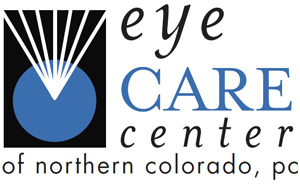Glaucoma

Glaucoma Overview
Glaucoma is a complex disease in which damage to the optic nerve leads to progressive, irreversible vision loss. Early diagnosis and management is the key to preventing this eye disease.
Whether diagnosing glaucoma at its earliest stage or treating the most advanced cases of the disease, Dr. Micah Rothstein, Dr. Anjali Sheth and Dr. Mansi Parikh, fellowship-trained glaucoma specialists, have the experience and expertise to handle the entire spectrum of glaucoma. Dr. Sheth and Dr. Parikh see patients in our Longmont, Lafayette, Boulder and Greeley locations. Dr. Rothstein sees patients at our Longmont and Lafayette locations.
What you can expect at The Eye Care Center of Northern Colorado for glaucoma treatment:
- Our doctors specialize in trabeculectomy, tube shunts and minimally invasive glaucoma surgery (MIGS) including Xen gel stent, hydrus stent, lstent inject, endoscopic photocoagulation and goniotomy, amongst others.
- The latest advances in diagnostic imaging, including high-resolution OCT and stereo fundus photography imaging.
- State-of-the-art exams rooms that allow for consultations in comfort and privacy. We can perform glaucoma laser treatments like SLT and selective laser trabeculoplasty in a comfortable and convenient environment.
- For advanced cases requiring surgery, Dr. Parikh, Dr. Rothstein and Dr. Sheth utilize Advanced Vision Surgery Center.
Glaucoma Treatment
When choosing the best course of treatment for glaucoma we consider the kind of glaucoma you have, the stage of the disease, and your lifestyle.
Glaucoma eye drops
In many cases, we begin medical therapy with eye drops. These can help decrease eye pressure by improving how fluid drains from your eye or by decreasing the amount of fluid your eye makes. We monitor the responsiveness and make changes depending on eye pressure and visual field changes.
Selective Laser Trabeculoplasty
Selective Laser Trabeculoplasty, or SLT, is a form of laser surgery where the energy from the laser is applied to the drainage tissue in the eye. These short pulses of low energy starts a chemical and biological change in the tissue that results in better drainage of fluid through the drain and out of the eye. It can take 1-3 months for the results to appear.
Minimally Invasive Glaucoma Surgery (MIGS)
Xen gel stent, hydrus stent, lstent, endoscopic photocoagulation and goniotomy, amongst others that can be combined with cataract extraction for mild to moderate glaucoma.
Trabeculectomy
This surgical operation lowers the intraocular pressure inside the eye by making a small hole in the eye wall (sclera), covered by a thin “trap-door”. This lets fluid leak from inside the eye, out through the wall of the eye, and under the covering tissue where it slowly is absorbed. This procedure reduces the pressure on the optic nerve and prevents or slows further loss of vision in glaucoma.
Peripheral Iridotomy
In angle closure or narrow angle glaucoma, laser iridotomy is the preferred method of treatment. In this procedure, a tiny hole is placed in the iris to allow the iris to fall away from the drainage area inside the eye. This hole acts as a type of “escape” valve so that the pressure in the front of the eye equalizes the pressure in the back of the eye.
Tube Shunt
Tube shunt surgery involves placing a flexible silicone tube with an attached silicone drainage pouch in the eye to help drain fluid from the eye. The advantage of tube-shunt surgery for glaucoma is that there is less chance of severe scarring that can block the drainage opening. This is an important consideration for people who have had prior surgery for glaucoma that did not work.
Cyclophotocoagulation (CPC)
Both micropulse and g probe transcleral CPC is offered to help target the ciliary body to reduce the amount of aqueous humor being produced by the eye. It is often used in refractory types of glaucoma.
Glaucoma FAQs
What is glaucoma and how does it affect vision?
Glaucoma is the result of optic nerve damage with resultant visual field loss that may be caused by elevated intraocular (eye) pressure. If the condition is left untreated, blindness will occur.
What are the symptoms of glaucoma?
Glaucoma is often referred to as a “silent thief” of sight because many times there are no major symptoms of the condition in its early stages. The only way to identify and treat glaucoma in the early stages is by having a complete eye exam every 1-2 years.
Symptoms of more advanced forms of glaucoma may include:
- Blurred vision
- Eye pain
- Headache
- Halos around lights
- Peripheral vision loss
- Tunnel vision
- Eye redness
- Hazy-looking eye
- Nausea
Do I need to treat my glaucoma right away?
Yes. Once glaucoma is detected, you need to take steps to lower the eye pressure as soon as possible. Vision loss due to glaucoma cannot be recovered.
What causes glaucoma?
Glaucoma is usually caused by an increase of fluid pressure in the eye. The front part of the eye contains clear, nourishing fluid called aqueous which constantly circulates through the eye. Normally, this fluid leaves the eye through a drainage system and returns to the bloodstream. When there is an overproduction of fluid or the drainage system isn’t working properly, the fluid can’t flow out at its normal rate and eye pressure increases. This causes a deterioration of the nerves, resulting in the development of blind spots in your visual field.
Glaucoma tends to run in families. In some people, scientists have identified genes related to high eye pressure and optic nerve damage. For most types of glaucoma, there aren’t many lifestyle factors that have been definitely linked to the disease.
Are there different types of glaucoma?
There are two major categories of glaucoma; open-angle glaucoma and narrow angle glaucoma. The “angle” refers to the drainage angle inside the eye that controls the outflow of the watery fluid (aqueous) which is continually being produced inside the eye. If the fluid can access the drainage angle, the glaucoma is known as open angle glaucoma. If the drainage angle is blocked and the fluid cannot reach it, the glaucoma is known as narrow angle glaucoma. Depending on the type that you have, the symptoms can vary:
Open-angle glaucoma:
- Patchy blind spots in your side (peripheral) or central vision, frequently in both eyes
- Tunnel vision in the advanced stages
Narrow angle glaucoma
This type of glaucoma is a medical emergency and if not treated immediately, blindness could occur in one to two days. See a doctor immediately if you are experiencing these symptoms.
- Severe headache
- Eye pain
- Nausea and vomiting
- Blurred vision
- Halos around lights
- Eye redness
Normal-tension glaucoma
In normal-tension glaucoma, your optic nerve becomes damaged even though your eye pressure is within the normal range. No one knows the exact reason for this. You may have a sensitive optic nerve or you may have less blood being supplied to your optic nerve. This limited blood flow could be caused by atherosclerosis — the buildup of fatty deposits (plaque) in the arteries — or other conditions that impair circulation.
Pediatric glaucoma
It’s possible for infants and children to have glaucoma. It may be present from birth or develop in the first few years of life. The optic nerve damage may be caused by drainage blockages or an underlying medical condition.
Pigmentary glaucoma
In pigmentary glaucoma, pigment granules from your iris build up in the drainage channels, slowing or blocking fluid exiting your eye. Activities like jogging can stir up the pigment granules, depositing them on the trabecular meshwork and causing pressure to intermittently rise.
How is glaucoma detected?
Glaucoma is detected through a comprehensive eye exam that includes:
- An ophthalmic technician gathering baseline information, including personal history, vision, pressure, visual field examination, optic nerve photos, and OCT nerve imaging.
- Next, you will either have a gonioscopy exam or have your eyes dilated in order to properly diagnose your glaucoma.
- In some cases, you will return for additional testing.
How is glaucoma treated?
Treatment depends on the kind of glaucoma, the stage of the disease, and the patient’s lifestyle. In many cases, we begin medical therapy with eye drops. We monitor the responsiveness and make changes depending on eye pressure and visual field changes. We can also offer laser treatments to lower eye pressure. When medications and/or laser trabeculoplasty are unable to reduce the eye pressure enough, the best choice is to surgically make a new drain for the eye to allow the fluid that cannot get out through the natural drain and decrease the eye pressure.



